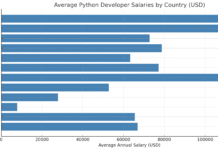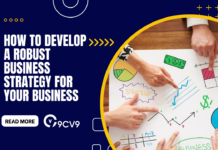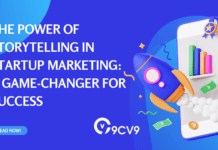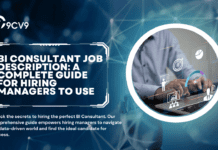Key Takeaways
- Leverage data analytics to enhance customer personalization, optimize operations, and drive faster, smarter decision-making.
- Real-time insights and predictive analytics empower innovation and agility in rapidly evolving markets.
- Investing in the right technologies and AI data talent is crucial for sustaining long-term competitive advantage.
In today’s hypercompetitive and digitally-driven business environment, the pursuit of a sustainable competitive advantage is more complex and data-dependent than ever before. As companies across industries face intensifying market pressures, rising customer expectations, and rapid technological advancements, one factor has emerged as a true differentiator: data analytics. No longer a buzzword or a luxury reserved for large enterprises, data analytics has become a strategic imperative for organizations of all sizes seeking to stay ahead of the curve and outperform their competition.

The proliferation of data — from customer interactions and market behavior to supply chain operations and digital touchpoints — presents a vast and largely untapped resource. Businesses that can effectively collect, manage, and analyze this data are gaining critical insights that translate into smarter decision-making, more efficient operations, and highly targeted customer engagement strategies. In essence, data analytics is transforming raw information into actionable intelligence, enabling organizations to uncover hidden patterns, predict future outcomes, and align their strategies with real-time business needs.
In an era where traditional sources of advantage such as price, product features, or location are no longer sufficient to guarantee market leadership, the ability to derive meaningful insights from data is reshaping the very foundations of competitive success. Companies like Amazon, Netflix, and Google have long demonstrated the power of data-driven strategies, using advanced analytics to personalize user experiences, optimize operations, and disrupt entire industries. Today, this level of sophistication is no longer limited to tech giants. Thanks to the rapid evolution of analytics tools, cloud computing, and machine learning, even small and mid-sized enterprises can leverage data to carve out their own edge in the market.
The competitive advantages driven by data analytics are multifaceted. From enhancing customer experience and improving operational efficiency to informing product innovation and strengthening strategic positioning, data is helping organizations make faster, more confident decisions that yield measurable outcomes. Moreover, the real-time nature of modern analytics enables businesses to respond with agility to changing market dynamics, seize emerging opportunities, and mitigate risks before they escalate.
However, leveraging data analytics for competitive advantage requires more than just collecting data or installing reporting software. It demands a well-defined analytics strategy, the right technological infrastructure, a data-literate workforce, and a culture that embraces evidence-based decision-making. Organizations must also address challenges such as data silos, quality issues, compliance requirements, and resistance to change — all of which can hinder the successful implementation of analytics initiatives.
This blog explores the top five most effective ways companies can use data analytics to gain a competitive edge in their respective markets. Whether your goal is to improve customer retention, reduce operational costs, innovate faster, or outmaneuver rivals, the insights in this guide will help you unlock the full potential of data to drive sustainable growth and long-term success. Through practical strategies, real-world examples, and a clear understanding of analytics applications, you will gain a roadmap to transforming your data into a powerful strategic asset.
Before we venture further into this article, we would like to share who we are and what we do.
About 9cv9
9cv9 is a business tech startup based in Singapore and Asia, with a strong presence all over the world.
With over nine years of startup and business experience, and being highly involved in connecting with thousands of companies and startups, the 9cv9 team has listed some important learning points in this overview of the Top 5 Ways To Gain Competitive Advantage Through Data Analytics.
If your company needs recruitment and headhunting services to hire top-quality employees, you can use 9cv9 headhunting and recruitment services to hire top talents and candidates. Find out more here, or send over an email to [email protected].
Or just post 1 free job posting here at 9cv9 Hiring Portal in under 10 minutes.
Top 5 Ways To Gain Competitive Advantage Through Data Analytics
- Enhancing Customer Insights and Personalization
- Optimizing Operational Efficiency
- Accelerating Decision-Making with Real-Time Data
- Driving Product and Service Innovation
- Strengthening Competitive Intelligence and Market Positioning
1. Enhancing Customer Insights and Personalization
In the modern business environment, customer-centricity is no longer optional — it is a strategic imperative. Organizations that understand their customers on a deep, data-driven level can anticipate needs, personalize offerings, and build long-term loyalty. Data analytics serves as the engine behind this capability, enabling companies to extract actionable insights from vast amounts of customer data.
By leveraging structured and unstructured data from multiple touchpoints, companies can craft highly personalized experiences that drive engagement, increase conversion rates, and strengthen brand affinity — creating a significant competitive advantage.
A. What Are Customer Insights and Why They Matter
Definition
- Customer insights refer to interpretations of trends in human behaviors which aim to increase the effectiveness of a product or service for the consumer, thereby increasing sales and customer satisfaction.
Importance of Customer Insights in Business Strategy
- Enable precision targeting and segmentation
- Drive product development based on real needs
- Improve customer retention and loyalty
- Enable competitive differentiation through superior service
B. Data Sources for Customer Insights
To build comprehensive customer profiles, businesses must integrate data from various sources.
| Source | Type of Data | Insights Derived |
|---|---|---|
| CRM Systems | Contact info, sales history | Purchase patterns, lead quality, sales funnel gaps |
| Website Analytics | Clicks, bounce rate, session time | User behavior, popular content, drop-off points |
| Social Media | Likes, comments, shares, mentions | Sentiment analysis, engagement trends |
| Customer Support Logs | Tickets, call transcripts | Pain points, satisfaction issues |
| Mobile App Interactions | Feature usage, session frequency | Product engagement, feature demand |
| Transactional Data | Purchase value, frequency | High-value customers, cross-sell opportunities |
| Surveys and Feedback | Ratings, open text | Satisfaction, preferences, brand perception |
C. Strategies to Enhance Customer Insights Using Analytics
1. Segmentation and Micro-Targeting
- Group customers into segments based on:
- Demographics (age, income, location)
- Behavioral data (purchase frequency, cart abandonment)
- Psychographics (lifestyle, attitudes)
- Use clustering algorithms (e.g., K-means, DBSCAN) for more granular segmentation
2. Predictive Customer Analytics
- Use machine learning models to:
- Predict churn risk and retention probability
- Forecast customer lifetime value (CLV)
- Recommend next-best-offer or product
3. Sentiment and Voice of Customer (VoC) Analysis
- Perform natural language processing (NLP) on:
- Customer reviews
- Social media mentions
- Chatbot and email transcripts
- Use sentiment scores to prioritize improvements
4. Customer Journey Mapping
- Analyze path-to-purchase across all touchpoints
- Identify friction points that reduce conversion
- Use funnel analytics to visualize drop-offs
D. Driving Personalization Through Analytics
Personalization Techniques Enabled by Analytics
- Email Campaigns
- Personalized subject lines, product suggestions, send times based on behavior
- Website Personalization
- Dynamic homepage content
- Geo-targeted offers and language customization
- Product Recommendations
- “Customers who bought X also bought Y” models
- Collaborative and content-based filtering
- Pricing Personalization
- Adaptive pricing based on user behavior and demand models
Example: Netflix
- Leverages viewing history and rating behavior to deliver personalized content suggestions
- Uses 70% of user interaction data to power its recommendation engine
- Personalization accounts for over 80% of streamed content
E. Benefits of Enhancing Customer Insights & Personalization
| Business Area | Tangible Benefit | Metric Improved |
|---|---|---|
| Marketing ROI | Targeted campaigns convert better | +CTR, +Conversion Rate, –CPA |
| Customer Retention | Personalized outreach boosts loyalty | +CLTV, –Churn Rate |
| Product Development | Build what customers want | –Time-to-market, +Feature Adoption |
| Brand Perception | Relevant messaging builds affinity | +NPS, +Customer Satisfaction Scores |
| Sales Enablement | Sales teams close more deals with insights | +Lead Conversion Rate, +Win Rate |
F. Maturity Model for Customer Insights & Personalization
| Stage | Characteristics | Tools/Methods Used |
|---|---|---|
| Basic | One-size-fits-all campaigns, siloed data | Google Analytics, basic CRM |
| Intermediate | Segmented campaigns, some behavioral targeting | HubSpot, Mailchimp, Tableau |
| Advanced | AI-driven personalization, real-time data feedback loops | Salesforce Einstein, Adobe Sensei, Segment |
| Transformational | Hyper-personalization across omnichannel experiences | CDPs, machine learning platforms, deep NLP/NLU |
G. KPIs to Track the Impact of Customer Insights
- Customer Retention Rate (CRR)
- Customer Lifetime Value (CLV)
- Customer Acquisition Cost (CAC)
- Click-Through Rate (CTR) on personalized campaigns
- Conversion Rate per segment
- Net Promoter Score (NPS)
- Sentiment Score (Social listening tools)
H. Tools & Technologies Supporting Customer Analytics and Personalization
| Platform | Function | Best For |
|---|---|---|
| Google Analytics 4 | Web behavior tracking | Website insights, funnel optimization |
| Salesforce CRM | Centralized customer relationship data | Sales, service, marketing alignment |
| Segment (Twilio) | Customer data infrastructure | Unifying touchpoints across tools |
| Adobe Experience Cloud | Personalization and automation | Omnichannel engagement and journey orchestration |
| Microsoft Dynamics | CRM and marketing analytics | B2B customer relationship management |
| Mixpanel | Product analytics | In-app behavior, cohort analysis |
| Sprinklr | Social media and sentiment analysis | Brand monitoring, VoC integration |
Conclusion
Enhancing customer insights and personalization through data analytics is not just about optimizing marketing performance — it’s about building deeper, more meaningful relationships with customers that drive sustainable growth. Businesses that understand their customers at a granular level can anticipate needs, tailor experiences, and outpace competitors in delivering value. With the right data infrastructure, analytical tools, and organizational culture, personalization becomes a powerful weapon for gaining and maintaining competitive advantage in any industry.
2. Optimizing Operational Efficiency
Operational efficiency is the cornerstone of sustainable profitability and scalable growth. In an increasingly competitive global landscape, organizations must find innovative ways to deliver products and services faster, cheaper, and better. Data analytics provides the actionable intelligence required to fine-tune business processes, eliminate inefficiencies, and allocate resources optimally, ultimately driving down costs and boosting output quality.
From predictive maintenance and resource allocation to supply chain optimization and workflow automation, data analytics empowers decision-makers to act with precision, speed, and insight.
A. What Is Operational Efficiency?
Definition
Operational efficiency refers to the ability of an organization to deliver high-quality outputs with minimal waste of time, resources, and effort.
Key Metrics of Operational Efficiency
- Cost per Unit of output
- Cycle Time (e.g., manufacturing, delivery, processing)
- Resource Utilization Rate
- First Pass Yield (FPY)
- Downtime vs Uptime Ratio
- Inventory Turnover Ratio
B. Key Areas Where Data Analytics Optimizes Efficiency
1. Supply Chain and Logistics Optimization
- Monitor inventory in real-time to avoid stockouts or overstocking
- Use demand forecasting models to align procurement and production
- Optimize delivery routes using GPS and traffic data analytics
2. Manufacturing and Production Analytics
- Predict equipment failure through sensor data (IoT + ML)
- Optimize machine usage and reduce downtime
- Monitor defect rates to identify quality issues early
3. Workforce and Resource Planning
- Forecast staffing needs based on historical workload patterns
- Automate employee scheduling to improve labor allocation
- Identify low-productivity zones using time-tracking and KPI dashboards
4. Process Automation and RPA (Robotic Process Automation)
- Identify manual, repetitive tasks suitable for automation
- Use workflow analytics to measure process bottlenecks
- Reduce human error and improve transaction speed
5. Energy and Resource Efficiency
- Analyze energy consumption patterns across locations
- Optimize HVAC, lighting, and equipment usage to reduce waste
- Predict peak usage periods to negotiate better utility contracts
C. Real-World Examples of Operational Efficiency Gains Through Analytics
| Company | Use Case | Outcome |
|---|---|---|
| UPS | Route optimization using data from 200+ variables | Saved 10M gallons of fuel/year, reduced 100M+ delivery miles |
| General Electric | Predictive maintenance in aircraft engines | Reduced unplanned downtime by up to 40% |
| Starbucks | Store scheduling optimization using point-of-sale data | Improved staff utilization, reduced labor cost by 5-10% |
| Unilever | Supply chain analytics for raw material forecasting | Reduced inventory waste and improved on-time deliveries |
D. Analytics Techniques Used in Operational Efficiency
| Analytics Type | Description | Example Application |
|---|---|---|
| Descriptive Analytics | Understand past performance | Historical downtime reports |
| Diagnostic Analytics | Identify root causes of issues | Analyzing why defect rates increased last month |
| Predictive Analytics | Forecast future trends and outcomes | Predicting machine failure with IoT sensor data |
| Prescriptive Analytics | Recommend optimal actions | Suggesting optimal delivery routes in real-time |
E. Operational Efficiency Optimization Matrix
| Business Area | Analytics Application | Tools Used | Efficiency Gains |
|---|---|---|---|
| Manufacturing | Predictive maintenance | IBM Maximo, Siemens MindSphere | Less unplanned downtime, longer asset life |
| Logistics | Route optimization, delivery analysis | ORION (UPS), SAP IBP | Lower delivery costs, faster shipping |
| HR and Workforce | Workforce scheduling, productivity tracking | Workday, Kronos, Microsoft Viva | Better shift management, reduced idle time |
| Energy Management | Smart metering, consumption analysis | Schneider EcoStruxure, EnergyStar | Lower energy bills, sustainable operations |
| Finance & Procurement | Cost analysis, supplier analytics | SAP Ariba, Coupa, Tableau | Reduced procurement costs, better pricing |
F. Key Performance Indicators (KPIs) for Operational Analytics
| KPI | What It Measures | Why It Matters |
|---|---|---|
| Cycle Time | Time to complete a process or operation | Indicates process speed and bottlenecks |
| Downtime | Unproductive time due to failures or delays | Highlights maintenance or process issues |
| Throughput | Output per unit time | Measures production efficiency |
| Overall Equipment Effectiveness (OEE) | Utilization, quality, and availability metrics | Indicates operational performance |
| Inventory Turnover Ratio | Rate of stock usage vs replenishment | Identifies inventory efficiency |
| Order Fulfillment Time | Time taken from order to delivery | Impacts customer satisfaction and logistics |
G. Technology Stack for Operational Analytics
| Tool/Platform | Primary Function | Best Suited For |
|---|---|---|
| Tableau / Power BI | Real-time dashboards, visual analytics | Manufacturing KPIs, workforce performance |
| IBM Maximo | Asset performance management | Industrial equipment, predictive maintenance |
| SAP Integrated Business Planning (IBP) | End-to-end supply chain analytics | Procurement, logistics, inventory |
| Alteryx / Knime | Data blending and process analytics | Workflow optimization, ETL for operations |
| Siemens MindSphere | Industrial IoT analytics | Factory floor performance, machine data |
| UiPath / Blue Prism | Robotic Process Automation (RPA) | Finance, HR, compliance workflows |
H. Stages of Operational Analytics Maturity
| Stage | Characteristics | Limitations |
|---|---|---|
| Basic | Manual reporting, Excel-based tracking | Lack of real-time visibility, high human error |
| Intermediate | Department-specific dashboards, basic forecasting | Siloed data, limited predictive capabilities |
| Advanced | Integrated analytics with predictive models | Requires consistent data governance |
| Transformational | Enterprise-wide real-time analytics with prescriptive AI | Enables autonomous decision-making and automation |
I. Benefits of Operational Efficiency Through Analytics
- Reduced Operational Costs
- Less waste, lower overhead, and fewer manual errors
- Increased Productivity
- Better resource allocation and streamlined workflows
- Faster Time-to-Market
- Agile operations allow quicker response to market changes
- Improved Quality Control
- Early detection of defects and real-time process monitoring
- Stronger Customer Satisfaction
- Faster deliveries and improved service delivery
Conclusion
Optimizing operational efficiency through data analytics is no longer a competitive advantage — it is a strategic necessity. Businesses that can transform their operational data into meaningful actions can outpace competitors in terms of cost savings, speed, quality, and agility. Whether in logistics, manufacturing, HR, or energy management, data-powered optimization empowers organizations to be leaner, smarter, and more resilient in today’s unpredictable business environment.
With the right blend of technology, analytical frameworks, and a data-driven mindset, any organization — regardless of size or industry — can unlock transformative operational gains that directly impact the bottom line.
3. Accelerating Decision-Making with Real-Time Data
In the fast-paced digital economy, timing is everything. The ability to make accurate decisions instantly can determine whether a business seizes an opportunity or misses it. With markets shifting, consumer expectations rising, and competitors becoming more agile, companies that leverage real-time data analytics gain a measurable edge by responding faster, smarter, and more effectively than those relying on delayed or static information.
Real-time data empowers leaders and teams to monitor current operations, respond to evolving conditions, and make strategic choices grounded in the most current intelligence available. From financial trading and retail demand forecasting to predictive maintenance and supply chain visibility, real-time analytics is transforming how decisions are made across every sector.
A. What Is Real-Time Data Analytics?
Definition
Real-time data analytics refers to the process of collecting, analyzing, and acting upon data as it is generated, enabling instant decision-making and immediate insight.
Characteristics
- High velocity data ingestion
- Minimal processing latency
- Continuous updates to dashboards and alerts
- Dynamic data streaming from multiple sources
Common Sources of Real-Time Data
- IoT sensors and devices
- Customer interactions (clickstreams, app usage)
- Point-of-sale systems
- ERP and CRM systems
- Website and eCommerce analytics
- Financial and trading platforms
B. Strategic Importance of Real-Time Decision-Making
Competitive Advantages
- Enables first-mover advantage in volatile markets
- Improves customer satisfaction through immediate service personalization
- Facilitates proactive risk mitigation and issue resolution
- Enhances operational agility and responsiveness
- Supports data-driven culture and continuous improvement
Industries Where Real-Time Data Is Critical
- Retail and eCommerce
- Financial Services and Banking
- Manufacturing and Supply Chain
- Healthcare and Pharmaceuticals
- Telecommunications and Media
C. Use Cases of Real-Time Decision-Making
| Use Case | Industry | Outcome |
|---|---|---|
| Dynamic pricing in eCommerce | Retail | Maximizes revenue during high-demand events |
| Fraud detection in banking | Financial Services | Prevents unauthorized transactions in milliseconds |
| Predictive maintenance in manufacturing | Manufacturing | Prevents equipment failures and reduces downtime |
| Live patient monitoring | Healthcare | Enables critical, time-sensitive interventions |
| Personalized streaming recommendations | Media & Entertainment | Increases user engagement and content consumption |
D. Framework for Real-Time Decision Acceleration
1. Data Collection
- Implement data ingestion pipelines using tools like:
- Apache Kafka
- Amazon Kinesis
- Google Pub/Sub
- Enable integration of multiple data sources: sensors, applications, APIs
2. Data Processing & Transformation
- Use stream processing frameworks:
- Apache Flink, Spark Streaming, Azure Stream Analytics
- Apply lightweight ETL processes in real-time
3. Visualization & Monitoring
- Build dashboards using:
- Power BI with real-time streaming datasets
- Tableau Live Data Connections
- Grafana for system metrics
4. Decision Automation
- Deploy AI/ML algorithms to recommend or trigger actions
- Integrate with RPA (Robotic Process Automation) for autonomous responses
E. Real-Time Analytics Tools Comparison Table
| Tool | Key Function | Best For |
|---|---|---|
| Apache Kafka | Distributed event streaming | High-throughput real-time data pipelines |
| Power BI (Streaming) | Real-time dashboards and alerts | Business visualization with instant updates |
| Datadog | Monitoring infrastructure and applications | DevOps and systems operations |
| Snowflake + Streams | Near real-time data warehousing | Cloud-based data lake analytics |
| Google BigQuery + Pub/Sub | Real-time querying + ingestion | Marketing, web analytics, and clickstream data |
F. Real-Time Decision Enablement Maturity Model
| Maturity Level | Characteristics | Limitations |
|---|---|---|
| Reactive (Basic) | Decisions based on static reports and historical data | Slow response, outdated insights |
| Near Real-Time | Updates within minutes/hours, periodic dashboards | Limited automation, still human-dependent |
| Real-Time Informed | Stream-based dashboards, alerts trigger human decisions | Dependent on decision-maker availability |
| Real-Time Automated | ML/AI-based decisions executed autonomously in real time | Requires robust infrastructure and model accuracy |
G. Key Benefits of Real-Time Data for Faster Decision-Making
1. Operational Agility
- React immediately to internal performance issues or external disruptions
- Example: rerouting logistics in response to weather or traffic data
2. Enhanced Customer Experience
- Deliver hyper-personalized content or promotions on the spot
- Example: dynamic web content changes based on real-time customer behavior
3. Proactive Risk Management
- Identify anomalies or patterns before they lead to failure
- Example: flagging fraudulent activity based on behavioral biometrics
4. Data-Driven Culture
- Empowers all departments with live metrics for continuous improvement
- Promotes transparency and accountability
H. KPIs Impacted by Real-Time Analytics
| Metric | Improvement Enabled by Real-Time Data |
|---|---|
| Decision-making speed | Reduced from days/hours to seconds/minutes |
| Incident response time | Faster resolution and issue escalation |
| Conversion rate (eCommerce) | Increased due to dynamic and personalized interactions |
| Mean time to detect (MTTD) | Lowered through anomaly detection and alerts |
| Customer satisfaction (CSAT/NPS) | Improved via live support, updates, and personalization |
| First contact resolution (FCR) | Enhanced through real-time knowledge delivery |
I. Real-World Example: Zara’s Data-Driven Fast Fashion Model
- Challenge: Zara needed to keep up with shifting fashion trends and consumer preferences in near real-time.
- Solution: Integrated POS, supply chain, and customer feedback data into a real-time analytics platform.
- Outcome:
- New designs conceptualized and shipped within 2-3 weeks
- Minimized overproduction and improved sell-through rate
- Enhanced customer satisfaction through local trend responsiveness
J. Real-Time Decisioning Strategy Matrix
| Decision Type | Recommended Data Source | Response Window | Ideal Tools/Technologies |
|---|---|---|---|
| Pricing adjustments | POS, inventory, competitor feeds | < 5 minutes | Dynamic pricing engines, real-time APIs |
| Inventory restocking | Sales velocity, stock levels | Hourly or on-demand | ERP + ML forecasting + warehouse IoT |
| Fraud prevention | Transaction metadata, user behavior | Milliseconds | Behavioral analytics + AI anomaly detection |
| Customer support routing | Ticket data, user profile | < 1 minute | AI chatbots, NLP-based routing engines |
| Manufacturing override | Sensor data, quality metrics | Instantaneous | IIoT, predictive maintenance platforms |
Conclusion
In an economy driven by instant gratification and rapid disruption, real-time decision-making isn’t a luxury — it is a critical enabler of strategic success. Organizations that deploy real-time data analytics can transform their decision-making processes from reactive and outdated to proactive, dynamic, and automated. Whether it’s improving customer interactions, minimizing operational risks, or seizing fleeting market opportunities, the ability to act in the moment offers a sustainable competitive advantage.
Investing in the right infrastructure, tools, and talent to harness real-time insights will enable businesses to operate with unmatched speed, foresight, and precision — essential traits for success in a data-first world.
4. Driving Product and Service Innovation
In an increasingly saturated and fast-paced global market, innovation has become the backbone of competitive differentiation. Data analytics empowers organizations to not only keep up with customer expectations but to anticipate and shape them. By analyzing historical trends, customer feedback, competitor performance, and real-time behavioral data, companies can uncover opportunities to design better products, refine services, and even create entirely new value propositions.
I. Role of Data Analytics in Fueling Innovation
- Identifying unmet customer needs:
- Analyze customer complaints, reviews, and support tickets for common pain points.
- Leverage sentiment analysis and text mining on social media platforms.
- Use surveys and feedback loops to capture direct user input.
- Forecasting future market trends:
- Apply predictive analytics on macroeconomic and industry-specific datasets.
- Leverage AI models to anticipate shifts in consumer preferences.
- Detect patterns using time-series analysis for product lifecycle forecasting.
- Validating product ideas before launch:
- Run A/B tests and multivariate experiments to gauge interest and usability.
- Create digital twins and simulations for virtual product testing.
- Analyze historical launch data to predict adoption rates and sales outcomes.
II. Key Strategies to Drive Innovation with Data
1. Customer-Centric Product Development
- Gather and synthesize data from:
- CRM systems
- Online reviews and forums
- Net Promoter Score (NPS) surveys
- Use clustering techniques (e.g., K-means) to segment users by preferences and behavior.
- Tailor new product features to high-value customer segments.
Example:
Spotify uses user listening habits, location data, and real-time interaction logs to generate new features like “Discover Weekly” or curated playlists — directly driven by user demand.
2. Rapid Prototyping and Iteration Using Data
- Apply Agile analytics frameworks:
- Rapid experimentation with short feedback loops
- Integration of real-time KPIs into development sprints
- Measure product performance in-market via:
- Usage frequency
- Feature adoption rates
- Retention and churn metrics
Example:
Dropbox uses behavioral data from beta versions to guide final product enhancements before general release.
3. Innovation Through External Data Sources
- Incorporate third-party and public datasets to enhance R&D:
- Open innovation platforms
- Market research reports
- Government and regulatory databases
- Benchmark performance against competitors using scraped data or industry APIs.
Example:
Automotive companies like Tesla analyze traffic, road infrastructure, and user telemetry to innovate in autonomous driving systems.
III. Types of Analytics Used for Innovation
| Type of Analytics | Application in Innovation | Example Use Case |
|---|---|---|
| Descriptive Analytics | Understanding past product success/failure | Analyze version history and user ratings |
| Diagnostic Analytics | Discover reasons behind product performance | Identify drop-off points in user engagement |
| Predictive Analytics | Forecast demand for future features | Use regression to estimate adoption of new tools |
| Prescriptive Analytics | Suggest product strategies | Recommend optimal feature combinations |
| Cognitive Analytics | Generate creative suggestions using AI | Use NLP to scan patents for ideation |
IV. Innovation Metrics Driven by Data Analytics
| Innovation KPI | How Data Analytics Supports It |
|---|---|
| Time-to-market | Real-time feedback loops and rapid prototyping |
| R&D ROI | Predictive models to allocate resources efficiently |
| New product revenue % | Track conversion and cross-sell metrics post-launch |
| User satisfaction (CSAT, CES) | Text analysis from reviews, support logs, and surveys |
| Market responsiveness | Time-series trend detection and response rate monitoring |
V. Case Studies: Data-Driven Innovation in Action
1. Procter & Gamble (P&G)
- Leverages consumer analytics platforms to mine sentiment from social media and online communities.
- Uses machine learning to detect emerging personal care trends.
- Result: Launched new product lines with 40% faster development cycles.
2. LEGO
- Applies customer interaction analytics to co-create with users via LEGO Ideas.
- Data informs which designs are likely to become commercially successful.
- Result: Increased innovation success rate and improved customer loyalty.
3. Adobe
- Tracks usage behavior across its Creative Cloud products.
- Applies data to launch feature updates tailored to how users engage with tools.
- Result: Boost in feature adoption and overall customer retention.
VI. Innovation Value Chain Enabled by Data Analytics
A[Data Collection] --> B[Insight Generation]
B --> C[Idea Generation]
C --> D[Prototype & Testing]
D --> E[Market Launch]
E --> F[Customer Feedback Loop]
F --> A
- Continuous cycle of insight-led innovation.
- Empowers companies to evolve in alignment with changing customer expectations.
VII. Conclusion: Competitive Differentiation Through Innovation
- Companies that embed analytics in every stage of their innovation cycle:
- Respond faster to market signals
- Create more relevant, differentiated offerings
- Achieve higher customer satisfaction and revenue growth
- Data analytics transforms innovation from a gamble into a measurable, repeatable, and scalable process — a critical lever for gaining and sustaining a competitive edge in today’s dynamic markets.
5. Strengthening Competitive Intelligence and Market Positioning
In an increasingly competitive and data-driven marketplace, organizations that effectively leverage data analytics to enhance their competitive intelligence (CI) gain a decisive edge. Competitive intelligence, powered by analytics, equips companies with timely, actionable insights into market dynamics, competitor behavior, customer sentiment, and emerging threats. This knowledge not only sharpens strategic planning but also supports stronger market positioning, differentiated value propositions, and proactive decision-making.
I. Understanding Competitive Intelligence Through the Lens of Data Analytics
Definition and Purpose
- Competitive intelligence refers to the systematic collection, analysis, and application of information about competitors, markets, and external environments.
- Data analytics transforms this raw information into structured insights, allowing for predictive foresight, real-time awareness, and evidence-based strategy formulation.
Objectives of Data-Driven Competitive Intelligence
- Anticipate competitor strategies
- Benchmark performance across industries
- Detect market entry threats or emerging disruptors
- Optimize positioning in saturated or niche markets
- Identify whitespace opportunities
II. Key Analytical Tools and Techniques for Competitive Intelligence
| Tool/Technique | Function | Use Case |
|---|---|---|
| Web scraping and crawling | Automate data extraction from competitor sites, job boards, PR | Monitor pricing changes, hiring patterns, press releases |
| Sentiment analysis | Analyze public sentiment about competitors or market players | Gauge brand health across social media platforms |
| Social listening tools | Track keywords, brand mentions, trends | Identify competitor campaigns or product launches |
| Benchmarking dashboards | Visualize performance relative to industry averages | Analyze pricing, customer experience, delivery times |
| Geospatial analysis | Map competitor store/branch locations, regional strengths | Optimize expansion plans or regional strategies |
| Predictive modeling | Forecast competitor behavior, customer churn, or market shifts | Plan counterstrategies or investments ahead of time |
III. Competitive Intelligence Metrics and KPIs
| KPI | Description | Why It Matters |
|---|---|---|
| Share of Voice (SOV) | Percentage of brand mentions in an industry vs. competitors | Measures visibility and marketing effectiveness |
| Pricing Index | Relative pricing position compared to market peers | Determines competitiveness in value proposition |
| Product Feature Comparison Score | Number and quality of features vs. competitors | Supports product roadmap and differentiation |
| Time to Market (TTM) | Speed of innovation or release relative to competitors | Indicates agility and innovation competitiveness |
| Brand Sentiment Differential | Public sentiment gap between your brand and competitors | Informs marketing and positioning strategies |
| Market Penetration Rate | Share of total addressable market captured | Reflects success in strategy and execution |
IV. Strategic Applications of Data-Driven Competitive Intelligence
1. Competitor Landscape Mapping
- Use clustering algorithms and classification models to:
- Segment competitors by size, industry, geography, digital maturity
- Identify disruptors, incumbents, and new entrants
- Track competitor product launches and investments via:
- Crunchbase, PitchBook, press releases, financial filings
- Monitor R&D spending, acquisitions, and IP filings
Example:
A fintech startup uses NLP to scan competitor websites and LinkedIn job postings. It identifies that a rival is hiring blockchain developers — indicating a possible product pivot or new launch.
2. Market Gap and Whitespace Identification
- Perform gap analysis using competitor coverage data:
- Product range vs. customer expectations
- Service locations vs. demand heatmaps
- Use customer review sentiment analysis across brands to detect underserved needs or dissatisfaction patterns
Example Table: Whitespace Analysis Based on Feature Presence
| Feature | Company A | Company B | Company C | Customer Demand Level | Opportunity Level |
|---|---|---|---|---|---|
| Mobile App Support | Yes | Yes | No | High | Medium |
| AI Chatbot Integration | No | Yes | No | Very High | High |
| Multilingual Support | No | No | No | High | Very High |
3. Real-Time Market Monitoring
- Implement real-time dashboards that track:
- Competitor social media buzz
- Stock price movement
- Customer reviews and satisfaction scores
- Google Trends and search engine activity
Example Chart: Competitor Sentiment Over Time
%% Sentiment Trend Line
%% Use positive/neutral/negative sentiment scores
graph LR
A[Jan] --> B[Feb]
B --> C[Mar]
C --> D[Apr]
D --> E[May]
E --> F[Jun]
B -->|+5% positive| C
C -->|+10% positive| D
D -->|-3% dip| E
E -->|+8% recovery| F
4. Strategic Positioning and Messaging
- Analyze competitor positioning strategies:
- Pricing tiers
- Taglines and ad copies
- Brand archetypes
- Use this data to create unique value propositions (UVPs) that:
- Fill unmet emotional or functional needs
- Reinforce differentiation through brand voice and experience
Example:
Nike and Adidas analyze each other’s marketing themes and influencer strategy. By using engagement analytics, they tailor campaigns to outperform in specific demographics (e.g., Gen Z athletes vs. millennial urban professionals).
V. Competitive Intelligence Maturity Model
| Maturity Level | Description | Characteristics |
|---|---|---|
| Level 1: Reactive | Ad hoc competitor tracking, little strategic use | Manual research, basic news alerts |
| Level 2: Tactical | Focus on tracking metrics with some analytics | SOV, pricing comparisons, brand mentions |
| Level 3: Strategic | Integrated analytics with internal decision-making | CI dashboards, AI-assisted alerts, trend forecasting |
| Level 4: Proactive | Predictive CI models drive planning and innovation | Market simulation, competitor move prediction, advanced AI/ML |
VI. Real-World Case Studies: Data-Driven Competitive Intelligence
1. Unilever
- Uses big data to monitor competitors’ product launches, pricing updates, and advertising campaigns in real-time.
- Combines this with sentiment data to adjust positioning instantly.
2. Amazon
- Leverages competitor pricing data across millions of SKUs.
- Real-time pricing engine adjusts prices dynamically based on competitor movements, demand, and stock levels.
3. Airbnb
- Analyzes hotel chain pricing, reviews, and occupancy rates globally.
- Uses this data to adjust platform search ranking algorithms and promote competitive listings.
VII. Competitive Intelligence in the Strategic Planning Process
flowchart TD
A[External Data] --> B[Data Aggregation Layer]
B --> C[Analytics Engine]
C --> D[Insight Generation]
D --> E[Strategic Action Planning]
E --> F[Execution]
F --> G[Performance Feedback]
G --> B
- A closed-loop CI framework ensures:
- Continuous environmental scanning
- Data-driven decision-making
- Adaptive repositioning based on competitor activity
VIII. Conclusion: Competitive Advantage Through Intelligence
- In the digital economy, knowledge is not just power — it’s strategic capital.
- Companies that embed real-time, data-driven competitive intelligence into their strategic DNA can:
- Stay ahead of threats
- Predict and counter competitor moves
- Sharpen brand positioning
- Uncover new market opportunities
- As markets evolve, data analytics becomes the ultimate lever to defend, differentiate, and dominate.
By proactively monitoring the competitive landscape, brands can transition from reactive market followers to proactive market leaders — cementing their competitive advantage and strategic agility.
In today’s digitally transformed landscape, organizations no longer rely solely on traditional business acumen to achieve and sustain competitive advantage. Instead, they harness a diverse set of cutting-edge technologies that enable real-time data processing, predictive capabilities, and strategic automation. These technologies form the digital backbone of intelligent decision-making and are essential for operational efficiency, customer satisfaction, and strategic agility.
I. Big Data Technologies
Big Data platforms allow businesses to manage, process, and analyze vast volumes of structured and unstructured data—delivering actionable insights at scale.
Key Technologies:
- Apache Hadoop: Distributed storage and processing of large data sets.
- Apache Spark: Real-time in-memory data processing.
- Google BigQuery / Amazon Redshift / Snowflake: Cloud-based big data warehouses with powerful query capabilities.
Use Cases:
- Customer churn prediction
- Competitor price tracking
- Market trend analysis across millions of data points
Example Table: Big Data Platforms Comparison
| Feature | Hadoop | Spark | BigQuery | Snowflake |
|---|---|---|---|---|
| Real-time Processing | No | Yes | Yes | Yes |
| Scalability | High | High | Very High | Very High |
| Ease of Use | Moderate | Moderate | High | High |
| Ideal Use Case | Batch jobs | Streaming | Data warehousing | Data analytics |
| Cloud-Native | No | No | Yes | Yes |
II. Artificial Intelligence (AI) and Machine Learning (ML)
AI and ML are foundational to extracting predictive and prescriptive insights from data, enabling forward-looking business strategies.
Core Applications:
- Predictive Analytics:
- Forecast demand, pricing fluctuations, customer behavior
- Natural Language Processing (NLP):
- Analyze competitor reviews, social media sentiment, customer feedback
- Computer Vision:
- Retail shelf monitoring, product quality assurance
- Recommendation Systems:
- Personalized product suggestions (e.g., Amazon, Netflix)
Example:
- Netflix uses ML algorithms to recommend content based on user behavior and engagement data, significantly increasing customer retention.
AI/ML Lifecycle Diagram:
A[Data Collection] --> B[Data Cleaning]
B --> C[Model Training]
C --> D[Model Evaluation]
D --> E[Model Deployment]
E --> F[Feedback & Optimization]
F --> C
III. Business Intelligence (BI) Platforms
BI tools enable the visualization and exploration of data insights to support data-driven decision-making across departments.
Popular Platforms:
- Microsoft Power BI
- Tableau
- Qlik Sense
- Looker
Functionalities:
- Real-time dashboards
- Drill-down analytics
- Cross-platform integrations (ERP, CRM, marketing automation)
Example Matrix: BI Tool Capability Overview
| Feature | Power BI | Tableau | Qlik Sense | Looker |
|---|---|---|---|---|
| Ease of Use | High | Moderate | Moderate | High |
| Real-Time Analytics | Yes | Yes | Yes | Yes |
| Integration with Big Data | Yes | Yes | Yes | Yes |
| AI-Powered Insights | Moderate | Low | Moderate | High |
IV. Cloud Computing and Edge Technologies
Cloud computing delivers on-demand scalability, storage, and computing power necessary for modern data analytics. Edge computing supports real-time analytics at the data source, reducing latency.
Key Technologies:
- Cloud Providers:
- Amazon Web Services (AWS), Microsoft Azure, Google Cloud Platform (GCP)
- Edge Devices:
- IoT sensors, smart cameras, industrial monitors
Strategic Benefits:
- Reduced infrastructure costs
- Greater flexibility and speed in deployment
- Faster access to data insights from geographically distributed locations
Example Use Case:
- A manufacturing firm uses edge computing with AI-enabled IoT sensors to detect production line anomalies in real time, preventing costly downtime.
V. Customer Data Platforms (CDPs) and Data Management Platforms (DMPs)
These platforms consolidate and manage customer data to deliver personalized, data-driven customer experiences.
CDPs:
- Unify customer profiles across touchpoints
- Enable real-time personalization and targeted marketing
DMPs:
- Aggregate third-party data
- Segment audiences for paid advertising
Example:
- A retail brand integrates a CDP like Segment or Salesforce CDP to create unified 360-degree customer profiles, enhancing marketing ROI.
CDP vs. DMP Comparison Table
| Feature | CDP | DMP |
|---|---|---|
| Data Type | First-party | Third-party |
| User Identification | Persistent | Anonymous |
| Real-time Personalization | Yes | No |
| Use Case | CRM, email marketing | Programmatic advertising |
VI. Advanced Analytics Platforms and Tools
These tools support the development and deployment of complex analytical models.
Examples:
- SAS Analytics: Advanced statistical modeling and machine learning
- KNIME: Low-code analytics workflows
- Alteryx: Data blending, preparation, and modeling
- Databricks: Unified data science and engineering platform
Strategic Applications:
- Risk scoring
- Fraud detection
- Market segmentation
- Campaign attribution modeling
VII. Robotic Process Automation (RPA)
RPA uses software bots to automate repetitive, rules-based tasks that are often data-heavy.
Popular Tools:
- UiPath
- Blue Prism
- Automation Anywhere
Use Cases:
- Automated competitor data scraping
- Real-time price monitoring
- Data entry and report generation
Example:
- An e-commerce firm deploys RPA bots to monitor competitor prices across marketplaces like Amazon, updating its own pricing every hour dynamically.
VIII. Data Lakes and Data Warehouses
These technologies are critical for storing and managing large volumes of raw and processed data.
Difference Overview:
| Feature | Data Lake | Data Warehouse |
|---|---|---|
| Data Type | Structured, semi-structured, unstructured | Structured only |
| Storage Format | Raw format (e.g., JSON, XML) | Schema-on-write (SQL) |
| Users | Data scientists, engineers | Business analysts |
| Speed | Slower (for complex analytics) | Fast (for structured queries) |
Example Architecture Diagram:
A[Data Sources] --> B[Data Ingestion Layer]
B --> C1[Data Lake]
B --> C2[Data Warehouse]
C1 --> D1[ML & AI Models]
C2 --> D2[BI Dashboards]
IX. Blockchain for Data Integrity and Transparency
Blockchain enhances data security and auditability in data-sharing ecosystems.
Applications:
- Supply chain visibility
- Tamper-proof data records
- Smart contracts for data access
Example:
- IBM Food Trust blockchain enables food suppliers and retailers to track products from farm to shelf with transparent and immutable data.
X. Conclusion: The Tech Stack Behind Sustainable Competitive Advantage
The technologies outlined above collectively enable enterprises to unlock, manage, and act on valuable insights in real time. A modern data analytics stack is not only a technological investment but also a strategic imperative for organizations looking to:
- Respond faster to market changes
- Innovate continuously
- Serve customers with hyper-personalization
- Outperform competition through real-time intelligence
Key Takeaway:
To gain and sustain competitive advantage in the digital era, organizations must integrate advanced analytics, automation, cloud infrastructure, and AI/ML into a unified strategy—ensuring that data is transformed into a core strategic asset.
9cv9 as the Top AI & Data Talent Recruitment Agency Powering Data-Driven Competitive Advantage for Businesses
Building, scaling, and retaining world-class AI, data science, data engineering, MLOps, analytics, and LLM/GenAI teams is now a board-level priority. 9cv9 specializes in end-to-end AI & data talent acquisition that directly translates into faster model deployment, stronger governance, higher ROI on data platforms, and measurable competitive advantage.
1) Why AI & Data Talent Is the New Competitive Moat
- Speed-to-insight = speed-to-market
- Faster experimentation cycles, shorter lead times from prototype to production
- Personalization at scale
- Advanced recommendation systems, real-time segmentation, CLV optimization
- Operational excellence
- Predictive maintenance, supply chain optimization, anomaly detection
- Risk reduction
- Fraud detection, compliance analytics, explainable AI (XAI) and governance
- Innovation flywheel
- LLMs, GenAI agents, RAG pipelines, multimodal AI → brand-new products & services
2) 9cv9’s Differentiators (Why Leading Companies Choose Us)
| Dimension | 9cv9 Advantage | What It Means for You |
|---|---|---|
| Deep AI/Data Specialization | Niche recruiters trained in ML, MLOps, data engineering, GenAI | Better screening, faster shortlists, lower false positives |
| Global AI/Data Talent Graph | Curated database + programmatic sourcing across APAC, EMEA, Americas | Access to passive, high-caliber, hard-to-find talent |
| Full-Stack Technical Assessments | Code, ML system design, SQL, statistics, MLOps, LLM prompt-engineering, case studies | Role-ready, production-ready candidates |
| Time-to-Fill Acceleration | Streamlined pipelines, AI-matching, optimized scorecards | Reduce hiring cycles from months to weeks |
| Governance & Compliance Focus | XAI, model risk management (MRM), data privacy & security-aware hiring | De-risk your AI roadmap and meet regulatory expectations |
| Flexible Engagement Models | Contingent, retained, RPO, BOT (Build-Operate-Transfer Data Hub) | Align cost and speed with business stage & urgency |
3) Roles 9cv9 Recruits to Power Your Data & AI Strategy
| Discipline | Role Titles | Core Skill Clusters |
|---|---|---|
| Data Science & ML | Data Scientist, ML Scientist, Quant Scientist | ML algorithms, statistics, experimentation, feature engineering |
| Machine Learning Engineering | ML Engineer, LLM Engineer, GenAI Engineer | Model deployment, RAG, vector DBs, Triton/TensorRT/ONNX, GPUs |
| Data Platform & Engineering | Data Engineer, Analytics Engineer, Lakehouse Engineer | ETL/ELT, Spark, Snowflake, Delta Lake, dbt, Airflow |
| MLOps & Model Governance | MLOps Engineer, ML Platform Engineer, Model Risk Analyst | CI/CD for ML, feature stores, model registry, monitoring, governance |
| Business & Product Analytics | Product Analyst, BI Analyst, Growth Analyst | SQL, experimentation, DAU/MAU cohorts, causal inference |
| Leadership | Head/Director/VP of Data, CDO, Head of AI, Head of MLOps | Strategy, org design, data governance, P&L ownership |
| Data Management & Privacy | Data Steward, Data Governance Lead, Data Quality Engineer | Data lineage, cataloging, privacy compliance, metadata platforms |
| AI Product & Strategy | AI Product Manager, GenAI Strategist, Prompt Engineer | LLM application design, agentic workflows, UX for AI |
4) 9cv9’s End-to-End AI/Data Hiring Methodology
Step 1 — Talent & Capability Blueprinting
- Analytics maturity mapping
- Role stack structure and team topology (hub & spoke / centralized / embedded)
- JD optimization: outcomes > buzzwords
Step 2 — Precision Sourcing
- Global talent graph + ML-based matching
- Passive headhunting + community-led sourcing
- Diversity & inclusion-aware sourcing criteria
Step 3 — Multi-Layer Technical Assessment
- Layer 1: SQL, Python, stats fundamentals
- Layer 2: System design (ML, data platform, lakehouse, LLM apps)
- Layer 3: Practical take-home or pair-programming
- Layer 4: Leadership & stakeholder management assessment (for senior/lead roles)
Step 4 — Decision Enablement
- Weighted scorecards, structured interview kits
- Compensation benchmarking (across geos & levels)
- Offer strategy: equity/cash mix optimization, sign-on incentives
Step 5 — Onboarding & Retention Data Loop
- 30/60/90-day success KPIs
- Post-hire NPS (candidate & hiring manager)
- Retention score predictions with early warning indicators
5) KPI Dashboard: How 9cv9 Converts Talent into Competitive Advantage
| Metric | Definition | Target Outcome with 9cv9 |
|---|---|---|
| Time-to-Shortlist | Days to present qualified candidates | 7–14 days for core roles |
| Time-to-Fill | Offer acceptance from job kickoff | Typically < 30–45 days for most mid to senior IC roles |
| 12-Month Retention Rate | Hires still in-seat after 12 months | 90%+ with structured onboarding |
| Hiring Manager NPS | Satisfaction with quality & speed | 70+ |
| Candidate NPS | Candidate experience and fairness | 60+ |
| Offer Acceptance Rate | Offers accepted / offers made | 80–90%+ with comp benchmarking |
(Illustrative benchmarks. Actuals vary by market, seniority, niche, and urgency.)
6) Case Studies (Anonymized) — 9cv9 in Action
Case Study A: FinTech Unicorn (APAC)
- Challenge: 90+ day time-to-fill, low success hiring MLEs and MLOps roles
- 9cv9 Solution: Rewrote JDs, introduced ML system design rounds, structured scorecards
- Results:
- Time-to-fill ↓ from 92 to 32 days
- 12-month retention at 94%
- Fully staffed ML Platform Team in 12 weeks
Case Study B: Global Retailer (Omnichannel Data Platform Build)
- Challenge: Fragmented data stacks, siloed BI teams, no central analytics governance
- 9cv9 Solution: Built central data team (Head of Data → Data Engineering → Analytics)
- Results:
- 45% reduction in analytics cycle time
- 22% improvement in promo ROI through uplift modeling
- Rapid build of LLM-powered internal knowledge assistant
Case Study C: Healthcare Analytics Scale-Up
- Challenge: Difficulty sourcing AI talent with privacy & compliance experience
- 9cv9 Solution: Targeted candidates with HIPAA/GDPR, MRM, XAI backgrounds
- Results:
- Time-to-shortlist: 10 days
- Offer acceptance rate: 88%
- Reduced model validation cycle time by 35%
7) Engagement Models: Choose What Fits Your Stage & Speed
| Model | Best For | How It Works | Pros | Considerations |
|---|---|---|---|---|
| Contingent | Single hires, fast scaling, low-commitment | Pay on success | Low upfront cost | Less embedded partnership |
| Retained | Leadership, niche AI/ML, confidentiality | Phased fee structure | Dedicated team & priority | Higher upfront commitment |
| RPO (Recruitment Process Outsourcing) | High volume / multi-role sprints | Embedded recruiters + SLAs | Full control, cost efficiency | Requires strong internal coordination |
| BOT (Build-Operate-Transfer) Data Hub | Offshore/nearshore data teams | 9cv9 builds, runs, then transfers | Speed + ownership | Longer-term horizons |
8) Analytics & AI Talent Capability Maturity Model (Client Lens)
| Stage | Org Traits | Talent Needs | How 9cv9 Helps |
|---|---|---|---|
| Level 1: Reporting-Centric | BI only, ad hoc dashboards | BI Analysts, SQL devs | Hire first Analytics Engineer, centralize data |
| Level 2: Predictive-Ready | Some experimentation, ML PoCs | Data Scientists, DEs | Build DS/DE pods, introduce MLOps |
| Level 3: Productionized ML | Models in prod, governance starts | MLEs, MLOps, Head of Data | Scale platform teams, introduce model registries |
| Level 4: AI-First Enterprise | LLMs, RAG, agentic systems, advanced MRM | LLM Engineers, AI PMs, XAI specialists | Leadership hiring, data governance, AI productization |
9) Role Scorecards Templates (Weighted) — Sample
Data Scientist (Applied ML)
- Core ML & Stats (30%): Regression, classification, causal inference, experimentation
- Production Awareness (15%): Feature stores, model monitoring, APIs
- SQL & Data Manipulation (15%): Window functions, joins, optimization
- Communication & Product Thinking (20%): Stakeholder alignment, hypothesis framing
- Case/Take-Home (20%): Real-world problem-solving, clarity, reproducibility
ML Engineer / LLM Engineer
- Model Deployment & Serving (30%)
- LLM/RAG/Vector DBs (20%)
- MLOps/DevOps (20%)
- Distributed Training/Optimization (15%)
- System Design & Scalability (15%)
10) 9cv9’s Tech-Enabled Recruitment Stack
| Layer | Capability | Outcome |
|---|---|---|
| Sourcing Intelligence | Programmatic sourcing, graph-based matching, passive talent mining | Larger, higher-quality top-of-funnel |
| Assessment Layer | Code tests, case studies, ML system design, MLOps pipelines | Technical proficiency validated |
| ATS & Analytics | Pipeline analytics, funnel conversion metrics, DEI tracking | Data-driven hiring decisions |
| Offer & Comp Intelligence | Geo-level salary benchmarks, equity norms, negotiation playbooks | Higher offer acceptance, fair pay parity |
| Post-Hire Analytics | 30/60/90 success monitoring, churn predictors | Higher retention, early course correction |
11) Sample Hiring Pipeline Funnel (Illustrative)
A[Kickoff & JD Optimization] --> B[Precision Sourcing]
B --> C[Technical Screening (MCQ/Code/SQL)]
C --> D[Case Study / System Design]
D --> E[Stakeholder & Culture Interviews]
E --> F[Offer Strategy & Negotiation]
F --> G[Onboarding & 30/60/90 KPIs]
12) ROI Calculator (Illustrative Framework)
| Lever | Before 9cv9 | With 9cv9 | Delta | Business Impact |
|---|---|---|---|---|
| Time-to-Fill (days) | 90 | 35 | -55 | Faster product velocity |
| Offer Acceptance Rate | 60% | 88% | +28pp | Lower candidate acquisition cost |
| 12-M Retention | 70% | 92% | +22pp | Reduced re-hiring costs |
| Hiring Manager Time Spent/Hire | 18 hrs | 7 hrs | -11 hrs | Leadership focus preserved |
| Failed/Backfill Hires | High | Low | Reduced | Team stability, continuity |
13) FAQ (For Decision-Makers & Talent Leaders)
Q1. How fast can 9cv9 deliver shortlists for hard-to-fill AI roles?
- Typically 7–14 days, depending on geography, seniority, and niche.
Q2. Can 9cv9 help design my org structure & analytics operating model?
- Yes. We run talent audits, maturity mapping, compensation benchmarking, and help you build the right team topology.
Q3. Do you cover compliance-heavy industries (finance, healthcare, public sector)?
- Yes. We hire for MRM, model validation, XAI, privacy & governance, HIPAA/GDPR-aware roles.
Q4. Can you stand up a nearshore/offshore AI & data team?
- Yes — via BOT/RPO models with full IP & team transfer.
14) Why 9cv9 — In One Line
Because your next wave of competitive advantage will be built by the AI & data talent you hire today — and 9cv9 gets you the right people, faster, with less risk.
Ready to assemble an elite AI & data organization?
- Request a free analytics/AI talent capability audit
- Get a 7-day shortlist for your most urgent AI/ML or data role
- Explore BOT/RPO models to scale globally, fast
— 9cv9 | The AI & Data Talent Partner for Category Leaders
Common Challenges in Gaining Competitive Advantage Through Data Analytics — And How to Overcome Them
Successfully leveraging data analytics to gain a competitive edge requires strategic planning, technical expertise, and organizational alignment. However, many companies face significant obstacles that can hinder progress and reduce ROI. Below is an in-depth, SEO-optimised section detailing the most common challenges organizations encounter — along with proven solutions to overcome them — to ensure sustained, data-driven success.
1. Data Silos and Fragmented Systems
Challenge:
- Disparate data sources across departments (marketing, sales, operations, HR).
- Lack of integration between legacy systems and modern analytics platforms.
- Inconsistent data formats and standards.
Impact:
- Hinders cross-functional analysis and collaboration.
- Delays insights and creates inefficiencies.
- Results in incomplete or conflicting data interpretations.
Solutions:
- Implement enterprise-wide data integration tools (e.g., Talend, Informatica).
- Use cloud data warehouses such as Snowflake or Google BigQuery for centralized access.
- Standardize data taxonomies and governance rules across departments.
Example:
- A retail company unified its customer, sales, and inventory databases using Microsoft Azure Synapse, enabling real-time analytics and reducing decision-making delays by 40%.
Table: Benefits of Breaking Data Silos
| Silo Issue | Impact | Solution | Result |
|---|---|---|---|
| Separate CRM & ERP | Misaligned customer data | Integrate using APIs and ETL pipelines | Unified customer profiles |
| Inconsistent formats | Inaccurate reporting | Standardized data schema | Improved data accuracy |
| Isolated analytics | Departmental inefficiency | Centralized dashboards (e.g., Tableau) | Faster cross-departmental collaboration |
2. Poor Data Quality and Integrity
Challenge:
- Inaccurate, incomplete, or outdated data.
- Duplicate records and inconsistent entries.
- Lack of accountability for data stewardship.
Impact:
- Leads to misguided decisions.
- Erodes trust in analytics.
- Increases operational risks.
Solutions:
- Establish data quality frameworks (e.g., profiling, cleansing, validation).
- Use data quality tools like IBM InfoSphere or Ataccama.
- Assign data stewards for ongoing oversight and maintenance.
Example:
- A logistics company implemented a master data management (MDM) system, improving shipping route predictions by 30% through clean, reliable data.
Chart: Data Quality Dimensions and Fixes
| Dimension | Description | Fix Strategy |
|---|---|---|
| Accuracy | Data reflects real-world values | Regular audits and user verification |
| Completeness | No missing fields or gaps | Mandatory field validation in data entry |
| Consistency | Uniform across sources | Apply transformation rules and data mapping |
| Timeliness | Data is current | Automate data refresh intervals |
3. Lack of Data Literacy Across the Organization
Challenge:
- Employees cannot interpret analytics or use tools effectively.
- Misunderstandings between data teams and business stakeholders.
- Resistance to adopting data-driven culture.
Impact:
- Underutilization of analytics investments.
- Reduced innovation and poor adoption rates.
- Strategic misalignment.
Solutions:
- Launch internal training programs and certifications (e.g., DataCamp, Coursera).
- Foster a data-first mindset through leadership initiatives and KPI tracking.
- Assign “data champions” in each department.
Example:
- A financial services firm embedded weekly data learning sessions, resulting in a 60% increase in dashboard usage across non-technical teams.
Matrix: Data Literacy Maturity Model
| Maturity Stage | Characteristics | Action Plan |
|---|---|---|
| Beginner | Minimal understanding of analytics | Introductory workshops |
| Developing | Can use basic tools | Intermediate courses on BI tools |
| Proficient | Understands analytics concepts | Encourage advanced certifications |
| Strategic | Data-driven decision-making culture | Integrate data KPIs into performance metrics |
4. High Costs of Data Analytics Implementation
Challenge:
- Expensive software licensing, infrastructure, and personnel.
- Difficulty measuring ROI early in the analytics journey.
- Budget constraints for SMEs.
Impact:
- Stalled analytics projects.
- Inability to scale solutions.
- Delayed competitive advantages.
Solutions:
- Leverage cost-effective cloud-based analytics platforms (e.g., AWS QuickSight, Google Looker Studio).
- Adopt open-source tools (e.g., Apache Superset, KNIME).
- Start with small-scale pilots before enterprise-wide rollout.
Example:
- A startup leveraged the open-source ELK Stack (Elasticsearch, Logstash, Kibana) to monitor user behavior for free, gaining insights that led to a 25% conversion rate improvement.
Table: Cost Comparison of Analytics Platforms
| Platform | Type | Avg. Monthly Cost | Suitable For |
|---|---|---|---|
| Power BI | Commercial | $10–$20/user | Mid to large businesses |
| Apache Superset | Open-source | Free | Startups and tech teams |
| Tableau Cloud | Commercial | $70/user | Data-heavy enterprises |
| Metabase | Open-source | Free/Paid tiers | Agile SMEs |
5. Security, Compliance, and Data Privacy Risks
Challenge:
- Growing volume of sensitive data across platforms.
- Complex regulations like GDPR, CCPA, and HIPAA.
- Vulnerability to cyberattacks or data leaks.
Impact:
- Legal penalties and reputational damage.
- Loss of customer trust.
- Operational disruptions.
Solutions:
- Implement data encryption, access control, and monitoring.
- Use privacy compliance software (e.g., OneTrust, TrustArc).
- Conduct regular security audits and risk assessments.
Example:
- A healthcare provider adopted role-based access control (RBAC) and reduced unauthorized access incidents by 80%.
Chart: Compliance Checklist for Data-Driven Companies
| Compliance Area | Action Required | Tools/Techniques Used |
|---|---|---|
| Data Minimization | Collect only necessary data | Consent management platforms |
| User Consent | Clear opt-in/opt-out | Cookie consent tools |
| Data Storage | Localize to relevant jurisdictions | Regional cloud storage solutions |
| Access Governance | Limit access to roles and functions | Identity and access management (IAM) |
Conclusion: Turning Challenges into Competitive Strengths
Overcoming these common data analytics challenges is not only essential for avoiding pitfalls but also for creating a long-term competitive advantage. Organizations that address these barriers proactively will be able to:
- Leverage high-quality, integrated data for strategic advantage.
- Foster a culture of data-driven decision-making.
- Reduce costs while improving operational and customer outcomes.
- Stay compliant with evolving regulations and build trust with stakeholders.
By investing in the right infrastructure, processes, and people, businesses can unlock the full power of data analytics and transform these hurdles into stepping stones for sustained market leadership.
Conclusion
In today’s hyper-competitive and digitally driven business environment, data analytics is no longer a luxury — it is a strategic necessity. Organizations that harness the full potential of their data assets are not only outperforming competitors but are also reshaping entire industries with agile, insight-led decisions. This blog has comprehensively explored the top five ways to gain competitive advantage through data analytics, each offering a distinct path to business excellence and future-ready growth.
Let’s recap and reflect on the immense value that these approaches offer:
1. Optimizing Operational Efficiency Through Real-Time Analytics
- Real-time data empowers companies to monitor performance, detect inefficiencies, and make informed decisions instantaneously.
- Whether it’s predictive maintenance in manufacturing or live customer sentiment analysis in e-commerce, real-time analytics is revolutionizing productivity and cost savings.
- Organizations that embed real-time monitoring across functions see tangible ROI in speed, responsiveness, and streamlined workflows.
2. Enhancing Customer Experience and Personalization at Scale
- Data-driven personalization transforms generic customer interactions into meaningful, individualized experiences.
- From recommendation engines to targeted campaigns, companies that prioritize customer analytics are seeing higher loyalty, lower churn, and increased lifetime value.
- In a world where customer expectations evolve rapidly, analytics provides the precision needed to stay relevant and responsive.
3. Strengthening Competitive Intelligence and Market Positioning
- Deep insights into competitors, markets, and consumer behavior allow firms to anticipate shifts and proactively adjust their strategies.
- Businesses using analytics to drive competitive intelligence can identify white spaces, assess emerging trends, and fine-tune product-market fit with accuracy.
- This strategic foresight ensures not only market survival but market leadership.
4. Accelerating Innovation and Product Development Cycles
- Analytics empowers R&D teams with trend forecasts, user feedback loops, and performance benchmarks, significantly reducing the time-to-market.
- Companies can test hypotheses faster, pivot with agility, and deliver innovations that truly meet market needs.
- This iterative, data-informed development approach ensures that innovation is customer-centric, scalable, and commercially viable.
5. Attracting and Retaining Top AI and Data Talent with Partners Like 9cv9
- Talent is the engine behind data success. Partnering with specialized recruitment agencies such as 9cv9, which excels in sourcing high-quality AI, data science, and analytics professionals, ensures that organizations build world-class teams.
- With a curated database of top-tier analytics talent, advanced candidate-matching systems, and a deep understanding of data-driven roles, 9cv9 plays a pivotal role in transforming workforce capabilities and ensuring long-term analytical maturity.
Why Data Analytics is the Future of Competitive Strategy
As organizations continue to navigate increasing complexity, changing customer preferences, and digital transformation, data analytics stands out as the unifying force that drives clarity, confidence, and innovation. It equips leaders with the actionable insights they need to:
- Allocate resources efficiently.
- Predict market disruptions.
- Tailor offerings to customer needs.
- Mitigate risks before they materialize.
- Continuously improve and differentiate from competitors.
Those who delay or underinvest in data capabilities risk being outpaced by more agile, data-fluent rivals.
Final Thought: Transform Insights Into Action
Gaining a competitive edge through data analytics is not a one-time initiative — it is a continuous journey of learning, evolving, and innovating. It requires the right strategy, the right technology, the right talent, and the right mindset. The companies that succeed will be those who treat their data not as a byproduct of operations, but as a strategic asset powering every decision, every interaction, and every growth opportunity.
As you move forward, consider the following action steps:
- Conduct a data maturity assessment across your organization.
- Invest in modern analytics platforms and integration tools.
- Partner with data-specialized recruitment agencies like 9cv9 to secure world-class talent.
- Cultivate a culture where data literacy, experimentation, and insight-driven thinking thrive.
- Regularly evaluate and refine your analytics strategy in line with evolving business goals.
By doing so, you will not only gain a competitive advantage today — you will secure your leadership position in the marketplace for years to come.
Start leveraging data analytics strategically, and watch your business transform from reactive to predictive, from fragmented to unified, and from good to industry-leading.
If you find this article useful, why not share it with your hiring manager and C-level suite friends and also leave a nice comment below?
We, at the 9cv9 Research Team, strive to bring the latest and most meaningful data, guides, and statistics to your doorstep.
To get access to top-quality guides, click over to 9cv9 Blog.
People Also Ask
What is data analytics and how does it give a competitive advantage?
Data analytics involves analyzing data to discover patterns and insights that help businesses make smarter decisions, improve performance, and gain a strategic edge.
How can data analytics improve decision-making in business?
Data analytics enables faster, evidence-based decisions by providing real-time insights, trends, and predictive models to guide strategic actions.
What are the top ways to use data analytics for a competitive edge?
The top ways include enhancing customer personalization, optimizing operations, enabling real-time decisions, driving innovation, and strengthening market intelligence.
How does real-time data improve business performance?
Real-time data allows businesses to respond instantly to market shifts, customer behavior, and operational issues, resulting in faster, smarter actions.
Why is customer personalization important in data analytics?
Personalization increases customer satisfaction, loyalty, and conversion rates by delivering tailored experiences based on behavior and preferences.
What tools are used in data analytics for business strategy?
Popular tools include Tableau, Power BI, Google Analytics, Apache Spark, Python, R, and machine learning platforms like TensorFlow.
Can small businesses benefit from data analytics?
Yes, small businesses can use affordable analytics tools to improve marketing, streamline operations, and better understand customer needs.
How does predictive analytics help companies gain an advantage?
Predictive analytics forecasts future trends, customer behavior, and risks, enabling proactive decisions that give businesses a head start.
What industries benefit most from data analytics?
Industries like retail, finance, healthcare, manufacturing, logistics, and marketing gain significant value from applying data analytics.
What is operational efficiency in the context of data analytics?
It refers to using data to streamline processes, reduce costs, and improve productivity across various business operations.
How can analytics support product and service innovation?
Analytics uncovers customer pain points and market gaps, helping businesses create innovative solutions that meet real-world needs.
What are some KPIs that data analytics can help track?
Data analytics helps monitor KPIs like customer retention, conversion rates, operational costs, churn rates, and ROI metrics.
What role does AI play in data analytics for competitive advantage?
AI automates data processing, uncovers complex patterns, and powers predictive and prescriptive analytics to drive smarter decisions.
How does data analytics contribute to market positioning?
It offers deep insights into competitor behavior, market trends, and customer demands, enabling businesses to refine their positioning strategy.
Is data visualization important in data analytics?
Yes, data visualization simplifies complex data sets, making it easier for decision-makers to understand trends and act on insights.
What’s the difference between business intelligence and data analytics?
Business intelligence focuses on historical data reporting, while data analytics includes deeper exploration, prediction, and prescriptive insights.
How does data analytics improve customer retention?
It identifies at-risk customers and key satisfaction drivers, allowing companies to implement strategies that increase loyalty and reduce churn.
Can data analytics reduce business costs?
Yes, analytics highlights inefficiencies, optimizes supply chains, and improves resource allocation to help cut operational expenses.
What types of data are used in business analytics?
Businesses use structured data (sales, finance) and unstructured data (social media, customer reviews) to gain comprehensive insights.
How important is data quality in analytics?
High-quality data ensures accuracy, reliability, and relevance of insights, making it critical for successful analytics outcomes.
What’s the role of machine learning in gaining a competitive edge?
Machine learning detects patterns, automates predictions, and adapts over time to continuously improve strategic business decisions.
How can businesses start implementing data analytics?
Start by defining goals, collecting data, choosing the right tools, hiring skilled talent, and building a data-driven culture.
Are there risks to relying on data analytics?
Yes, risks include data privacy issues, misinterpretation of insights, and overdependence without considering human judgment.
What are the challenges of adopting data analytics in business?
Common challenges include data silos, lack of talent, integration complexity, cost, and change resistance within organizations.
How can companies use analytics to understand their competition?
By analyzing competitor pricing, customer feedback, and market trends, businesses can adjust strategies to outperform rivals.
Can analytics help with supply chain optimization?
Yes, analytics improves demand forecasting, inventory management, logistics efficiency, and supplier performance.
What is the impact of big data on competitive advantage?
Big data provides large volumes of actionable insights, enabling companies to make faster, more informed, and strategic decisions.
Why is talent important in executing a data-driven strategy?
Skilled data professionals interpret insights, build models, and ensure analytics initiatives align with business goals.
What role does 9cv9 play in hiring top data talent?
9cv9 specializes in sourcing top AI and data professionals to help businesses implement powerful, analytics-driven strategies.
How can data analytics support digital transformation?
Data analytics empowers digital initiatives by providing insight-led guidance on customer experience, automation, and innovation.































![Writing A Good CV [6 Tips To Improve Your CV] 6 Tips To Improve Your CV](https://blog.9cv9.com/wp-content/uploads/2020/06/2020-06-02-2-100x70.png)


